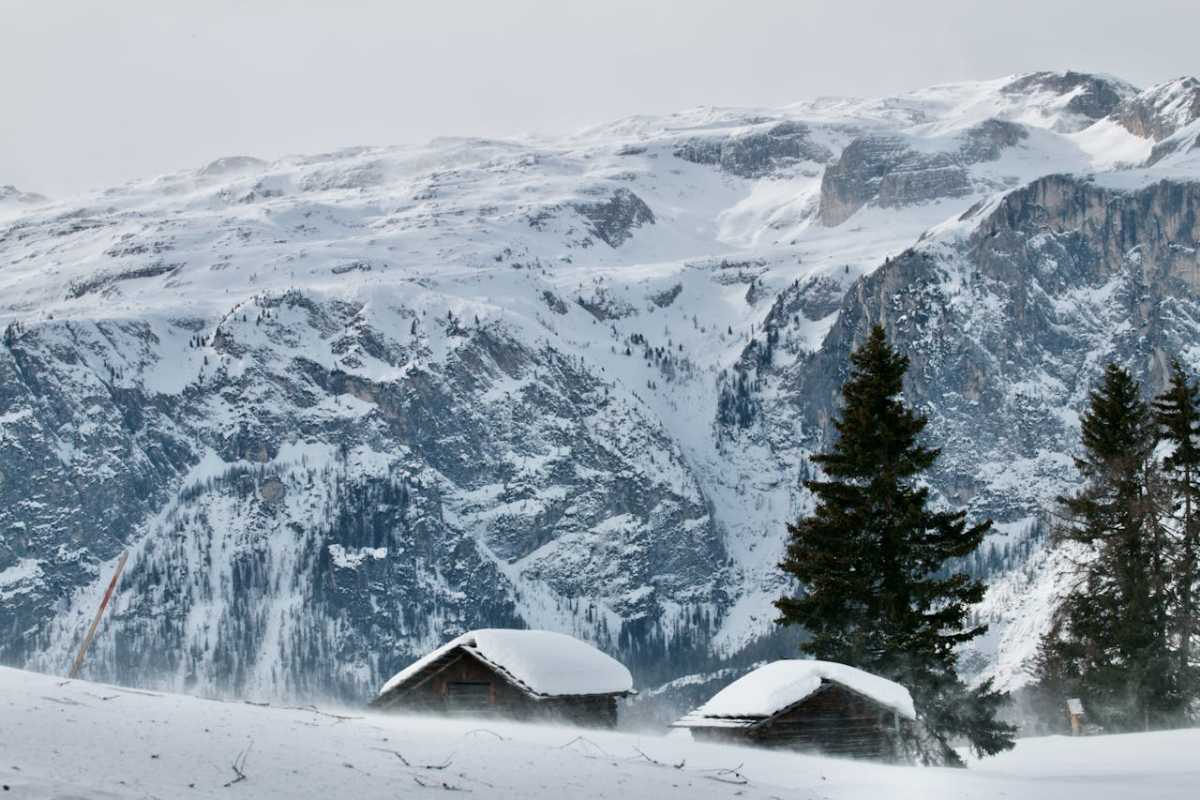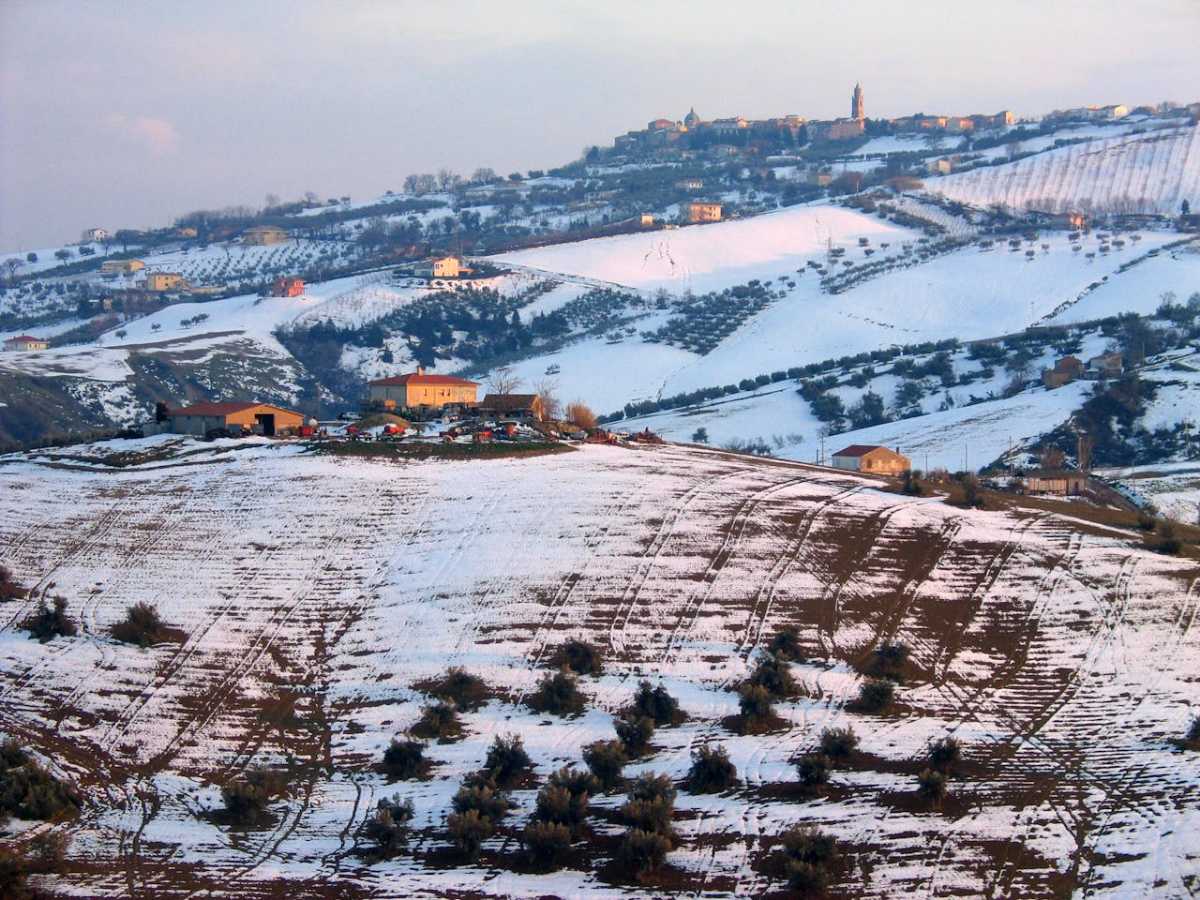Snowfall in Italy can be enjoyed by taking various winter trips. The Alps near Lake Como and the Dolomites close to Venice get lots of snow for skiing, with temperatures often below freezing and windy mountains. Cities like Florence and Rome sometimes get a little snow around freezing. The central Apennines near Tuscany, which have snowy mountains. Even the Amalfi Coast and Sicily, with Mount Etna near Taormina, can have snow on high peaks, even though it's usually mild. Knowing where it snows, close to popular places, and what the winter weather is like helps you plan your perfect Italian winter trip.
When Does It Snow in Italy?
- Best Snow Time (December to February): This is when you're most likely to see snow in the Alps and Dolomites. It will be cold, usually -15°C to 5°C (5°F to 41°F), great for winter sports. The cities in the north have the best chance of snow then too. The mountains can be windy.
- Snow Early and Late (November & March): The highest parts of the Alps can get snow earlier and later. It will be cold up high, and the wind might be stronger at these times.
Snow in Cities
- Milan, Turin, Bologna: Might get light to medium snow (a few days) between December and February. Temperatures will be around 0°C (32°F). The wind is usually light in cities. Be ready for travel problems.
- Rome, Florence, Venice: Hardly ever snows (maybe once every few years), and it doesn't stay long. The weather is usually mild, 5°C to 10°C (41°F to 50°F), with light winds. Even a little snow can cause big problems. Venice is especially tricky if there's also high water.
- Naples, Bari: Almost never snows (maybe once in many years). The winter weather is mild, 8°C to 15°C (46°F to 59°F), with light winds. Any snow will cause unexpected issues.
Where Does It Snow in Italy?
1. Snowfall in Northern Italy

Popular Places: Cortina d'Ampezzo, Val Gardena, Alta Badia, Madonna di Campiglio, Cervinia, Courmayeur, Sestriere.
With Italy's best snow spots - Alps & Dolomites, this area has the most snow that stays, so lots of people go here to ski. You'll see lots of snow (often very deep), and it will be cold, usually between -15°C and 5°C (5°F and 41°F). Nights can get much colder. Sometimes the weather is calm, and other times there can be medium to strong winds, especially high up and on open hills. Roads might close because of heavy snow, and you might need snow tires or chains. If you go skiing away from the marked paths, there's a risk of avalanches. The popular places can get crowded and cost more during busy times. Being high up can make some people feel unwell.
2. Snowfall in Central Italy

Popular Places: Roccaraso, Campo Felice, Terminillo.
While the coasts around Naples and the Cinque Terre rarely see snow, the Apennine Mountains, near Florence and Assisi, offer a good amount of snow on top, attracting winter enthusiasts. The mountains get a lot of snow, good for skiing and walking in snowshoes. It's usually between -10°C and 10°C (14°F and 50°F) in the mountains, and it gets colder the higher you go. The wind can blow hard, especially through mountain passes. Cities like Rome and Florence hardly ever get snow, and when they do, it doesn't stay long. The weather there is usually above freezing. The snowy time here isn't as long or as sure as in the Alps.
3. Snowfall in Southern Italy and the Island

Popular Places (for snow): Gambarie d'Aspromonte, Mount Etna, Fonni (Sardinia).
The weather here is usually mild in winter, and it only snows on the very high mountains. The coasts almost never get snow, and the temperature is usually between 5°C and 15°C (41°F and 59°F) with light winds. High mountains like Etna do get snow, and it can get below freezing with winds that can be strong at the top. The snow might not stay as long because the weather is warmer. The places to ski here are smaller than in the north. Big cities in the south like Naples and Bari don't get snow, and the winter weather is mild.
Things to Do During Snowfall in Italy
- Go skiing and snowboarding in the Italian Alps and Dolomites
- Explore fairytale winter towns like Bolzano, Merano, Bressanone, and Ortisei
- Relax at mountain spas and wellness resorts like QC Terme Dolomiti and Bagni di Bormio
- Attend magical Christmas markets in Milan, Florence, and Alpine towns like Trento.
- Try winter hiking and snowshoeing
- Enjoy ice skating
- Experience carnival in Venice (Late February)
Travel Tips for Snowfall in Italy
- Pack Smart for Changing Weather: Italy’s winter weather can vary greatly between regions. While mountain areas like the Dolomites and the Alps will have heavy snowfall and temperatures dropping to -10°C or lower, cities like Rome or Florence stay much milder (around 5–10°C). Always pack layered clothing, waterproof boots, thermal wear, and a good-quality winter jacket.
- Check Weather and Snow Reports: Before heading to mountainous regions or ski resorts, always check updated snow and weather forecasts. This is especially important if you’re planning skiing, snowboarding, or hiking activities.
- Be Prepared for Shorter Days: Winter days are shorter, especially in the north. Expect daylight from around 8:00 AM to 5:00 PM. Plan outdoor activities accordingly to maximize sightseeing time.
- Consider Train Travel: Italy’s trains are an excellent way to travel during winter, especially when some mountain roads might get snowy or icy. High-speed trains connect cities like Milan, Verona, and Turin easily.
